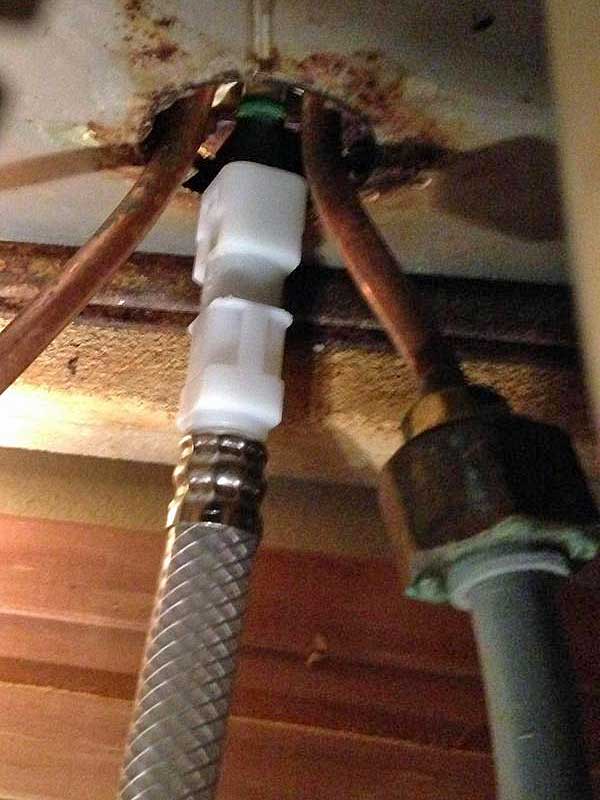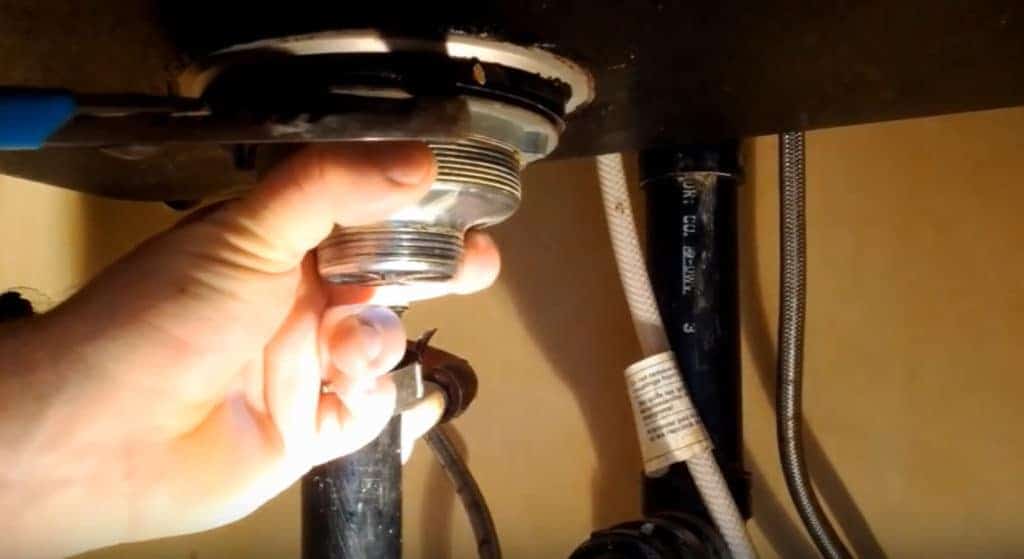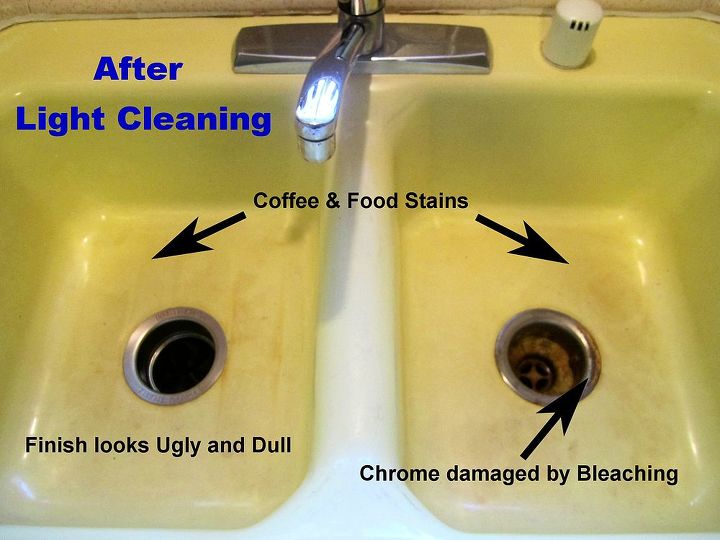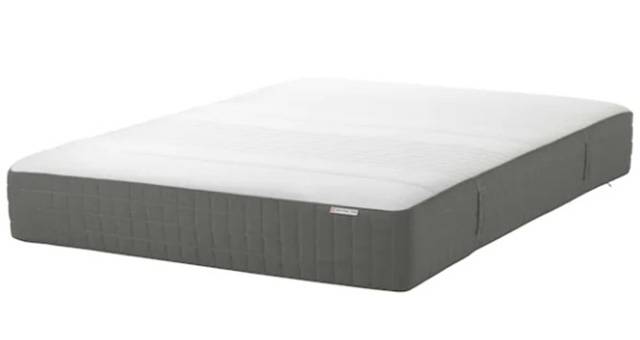How to Remove a Kitchen Sink Spray Nozzle
Having a functioning spray nozzle in your kitchen sink can make washing dishes and cleaning up a breeze. However, over time, these nozzles can get clogged or damaged, and you may need to remove them for cleaning or replacement. Here is a step-by-step guide on how to remove a kitchen sink spray nozzle.
How to Remove a Kitchen Sink Spray Nozzle Without Tools
If you don't have any tools on hand, you can still remove a kitchen sink spray nozzle using a simple household item – a rubber band. First, turn off the water supply to the sink. Then, wrap a rubber band tightly around the base of the nozzle. Use the rubber band as leverage and twist the nozzle counterclockwise to loosen it. Once it's loose, you can simply unscrew it by hand.
Removing a Kitchen Sink Spray Nozzle: Step-by-Step Guide
If you have the necessary tools, here is a step-by-step guide on how to remove a kitchen sink spray nozzle:
Step 1: Turn off the water supply to the sink.
Step 2: Using an adjustable wrench, unscrew the spray nozzle from the hose. If it's stuck, use pliers for extra leverage.
Step 3: Once the nozzle is removed, remove the rubber O-ring from the base of the nozzle. This is the seal that prevents water from leaking out.
Step 4: Inspect the O-ring for any damage or buildup. If it's damaged, replace it with a new one. If it's just dirty, clean it with a mild soap and warm water.
Step 5: If the nozzle is clogged, use a small brush or toothpick to remove any buildup or debris.
Step 6: Reattach the O-ring and screw the nozzle back onto the hose.
Step 7: Turn the water supply back on and test the nozzle to make sure it's working properly.
DIY: Removing a Kitchen Sink Spray Nozzle
If you're the DIY type, removing a kitchen sink spray nozzle can be a simple and satisfying task. Just follow the steps outlined above, and you can easily clean or replace the nozzle yourself without the need for a professional.
Removing a Kitchen Sink Spray Nozzle: Tips and Tricks
If your spray nozzle is hard to remove, try using a lubricant such as WD-40 to loosen it. Let it sit for a few minutes before attempting to unscrew it. You can also try using a hairdryer to heat up the nozzle and make it easier to remove.
Removing a Kitchen Sink Spray Nozzle: Common Mistakes to Avoid
One common mistake when removing a kitchen sink spray nozzle is not turning off the water supply first. This can result in a messy and potentially damaging situation. Make sure to turn off the water before attempting to remove the nozzle.
Another mistake is not using the right tools. Using pliers or other tools that are not meant for plumbing can damage the nozzle or hose. Make sure to use the appropriate tools for the job.
Removing a Kitchen Sink Spray Nozzle: Safety Precautions
When working with plumbing, it's important to take safety precautions to avoid any injuries. Make sure to wear gloves to protect your hands and avoid getting cut on any sharp edges. Also, be careful when using tools and make sure to turn off the water supply before starting any work.
How to Remove a Stuck Kitchen Sink Spray Nozzle
If you're having trouble removing a stuck kitchen sink spray nozzle, there are a few things you can try. First, make sure you have turned off the water supply and have the appropriate tools. If the nozzle is still stuck, try using a lubricant or heating it up with a hairdryer to loosen it. If all else fails, you may need to call a professional plumber for assistance.
Removing a Kitchen Sink Spray Nozzle: Troubleshooting Guide
If you've removed the spray nozzle and cleaned or replaced the O-ring, but it's still not working properly, there may be an issue with the hose or the nozzle itself. Inspect the hose for any damage or leaks, and make sure the nozzle is securely attached. If the problem persists, it's best to call a professional for further troubleshooting.
Removing a Kitchen Sink Spray Nozzle: Professional Help vs. DIY
While removing a kitchen sink spray nozzle can be a simple task, sometimes it's best to leave it to the professionals. If you encounter any issues or are not confident in your DIY skills, it's best to call a plumber to avoid causing any further damage to your plumbing system.
However, for simple tasks such as cleaning or replacing the O-ring, DIY can save you time and money. Just make sure to follow the proper steps and take safety precautions.
Why You Should Remove Your Kitchen Sink Spray Nozzle

Efficient Cleaning with a Simple Solution
 There are many factors to consider when designing or renovating a kitchen, and one important element that is often overlooked is the
kitchen sink spray nozzle
. While it may seem like a small and insignificant detail, this attachment can actually have a big impact on your daily kitchen routine. In fact, removing the spray nozzle from your kitchen sink can be a simple solution to creating a more efficient and functional space.
There are many factors to consider when designing or renovating a kitchen, and one important element that is often overlooked is the
kitchen sink spray nozzle
. While it may seem like a small and insignificant detail, this attachment can actually have a big impact on your daily kitchen routine. In fact, removing the spray nozzle from your kitchen sink can be a simple solution to creating a more efficient and functional space.
Prevent Clogs and Save Money
 One of the main reasons to remove the spray nozzle from your kitchen sink is to prevent clogs and save money on plumbing repairs. Over time, food particles, grease, and other debris can build up in the nozzle, causing it to become clogged and reducing its effectiveness. This can lead to costly plumbing services and potentially damage to your sink and pipes. By removing the nozzle, you eliminate this risk and save yourself from unnecessary expenses.
One of the main reasons to remove the spray nozzle from your kitchen sink is to prevent clogs and save money on plumbing repairs. Over time, food particles, grease, and other debris can build up in the nozzle, causing it to become clogged and reducing its effectiveness. This can lead to costly plumbing services and potentially damage to your sink and pipes. By removing the nozzle, you eliminate this risk and save yourself from unnecessary expenses.
Maximize Counter Space
 In addition to preventing clogs, removing the kitchen sink spray nozzle can also help maximize your counter space. The nozzle can take up valuable room on your sink, making it difficult to wash large pots and pans or perform other tasks. Without the nozzle, you have more room to work with and a larger area for meal prep and other kitchen activities.
In addition to preventing clogs, removing the kitchen sink spray nozzle can also help maximize your counter space. The nozzle can take up valuable room on your sink, making it difficult to wash large pots and pans or perform other tasks. Without the nozzle, you have more room to work with and a larger area for meal prep and other kitchen activities.
Upgrade to a Pull-Down Faucet
 If you're looking to upgrade your kitchen, removing the spray nozzle can also be a step towards a more modern and functional design. Instead of a traditional nozzle, consider installing a pull-down faucet. This type of faucet combines the features of a regular faucet and a spray nozzle, allowing you to easily switch between a steady stream of water and a powerful spray. This upgrade not only adds convenience but also adds a touch of style to your kitchen.
If you're looking to upgrade your kitchen, removing the spray nozzle can also be a step towards a more modern and functional design. Instead of a traditional nozzle, consider installing a pull-down faucet. This type of faucet combines the features of a regular faucet and a spray nozzle, allowing you to easily switch between a steady stream of water and a powerful spray. This upgrade not only adds convenience but also adds a touch of style to your kitchen.
Conclusion
 In conclusion, the kitchen sink spray nozzle may seem like a small detail, but it can have a big impact on your kitchen's functionality and design. By removing the nozzle, you can prevent clogs, save money on plumbing repairs, maximize your counter space, and even upgrade to a more modern faucet. So, if you're looking to improve the efficiency and aesthetics of your kitchen, consider removing the spray nozzle from your sink.
In conclusion, the kitchen sink spray nozzle may seem like a small detail, but it can have a big impact on your kitchen's functionality and design. By removing the nozzle, you can prevent clogs, save money on plumbing repairs, maximize your counter space, and even upgrade to a more modern faucet. So, if you're looking to improve the efficiency and aesthetics of your kitchen, consider removing the spray nozzle from your sink.




















































/25089301983_c5145fe85d_o-58418ef15f9b5851e5f392b5.jpg)



:max_bytes(150000):strip_icc()/sink-with-running-water-1033950126-25ffe2e2b2d0412083668d9cd791085e.jpg)











